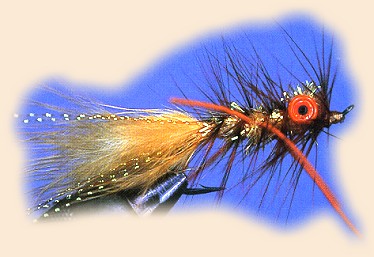Materials:
Hook: Steelhead streamer, sizes 2/0 to 10.
Thread: Orange 3/0 Monocord.
Tail: Marabou; orange Krystal Flash.
Rib: Optional, gold, copper or silver wire, or fine tinsel.
Body: Orange Crystal Chenille, regular chenille, yarn.
Hackle: Optional, palmered body hackle.
Legs: Round rubber (or Sili–Legs)
Eyes: Various weighted eyes: lead, nickel plate, non–toxic
with pupil (Real Eyes with adhesive inserts used)
This is a suggestive pattern built along the lines of the Woolly
Bugger. Tied in orange, it resembles a shrimp or crayfish; tied
in black or golden tones it resembles a stonefly nymph. Whether
in fresh or salt water, steelhead will eat these leggy flies.
As with all successful steelhead flies, this design incorporates
movement in the rubber legs, hackle, and marabou, plus color and
a bit of light–reflective flash. The weighted barbell eyes
flip the fly over, making it less likely to snag up.
Tying Tips:
You can tie the weighted eye on the very front part of the top
of the hook, just behind the hook, or about 1/4 to 1/3 of the
way back from the hook eye. (The Clouser Minnow, that most
deadly weighted–eyes–on–top fly, features
barbell eyes about 1/3 the way back.)
After you tie on the barbell eyes, place a drop of super glue
on the tie–down area. (Aaron Alpha recommended because it
has a long "working time" before it cures, it penetrates
better, and the bottle is less likely to dry out.)
Variations
This sample is tied in shrimp/crayfish orange. As juveniles
and adults, steelhead eat crayfish in fresh water and shrimp
in estuaries and in the ocean.
Another effective variation is black for a salmonfly nymph,
the Pteronarcys stonefly, or in the amber/brown
colors of the golden stonefly nymph.
Mike Maxwell of Golden West Fly Fishers in Vancouver, British
Columbia has a detailed theory about why steelhead eat
stonefly nymphs (and adults). He says, "Steelhead are
spawned and spend their juvenile years in the upper reaches
of the river where they feed on the many forms of underwater
and surface insect life. To escape predation, their habitat
is usually under or around rocks or large gravel, close to a
food supply and with well-oxygenated water.
"By a happy coincidence, large stonefly nymphs have exactly
the same habitat and form a major portion of the juvenile steelhead's
diet. This symbiotic relationship of large gravel, juvenile
steelhead, and stoneflt nymphs is extremely important when
locating the resting or holding stations of the upward migrating
steelhead and is now known as the juvenile habitat imprint."
The rubber or silicone Sili–Legs animate the fly, lending a
lifelike quality that triggers the steelhead to strike. Of course,
that same lifelike quality may also anger the fish into striking
an intruder into its territory.
In either case, stay alert while fishing because those dangling
rubber legs may cause a steelhead to "leg it on over" and
eat your Rubber Legs fly.
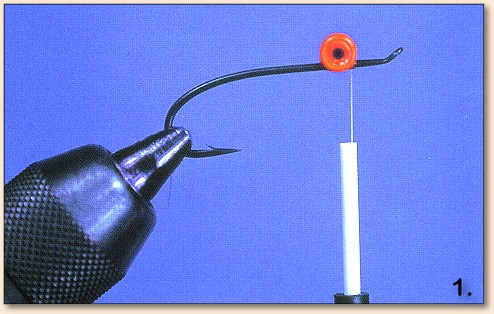
Step 1. Tie Real Eyes securely to top of hook. Make sure
eyes are centered. Apply one drop super glue (Aaron Alpha
recommended.)
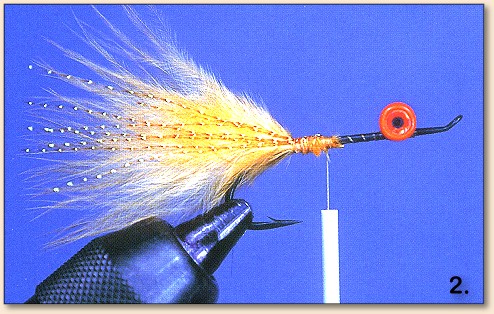
Step 2. Tie in marabou tail and optional Krystal Flash. Tail
should extend from 1/2 to full–shank length to rear.
Tie off, trim.
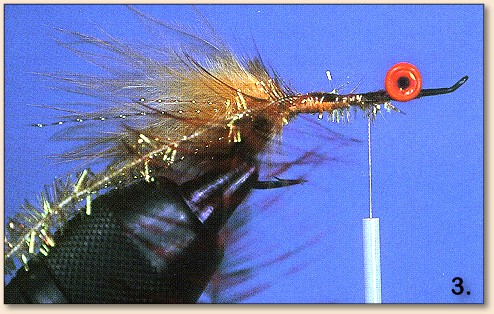
Step 3. Tie in optional rib. Tie in Crystal Chenille.
Tie in hackle by tip, leave room for one wrap of chenille
in front of tail.
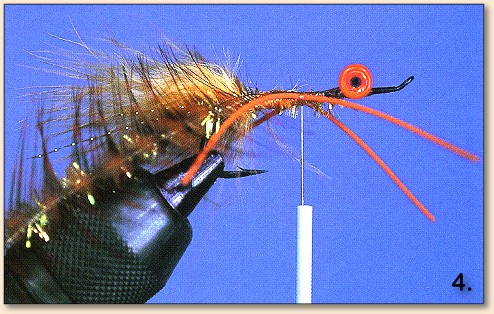
Step 4. Tie in rubber legs.
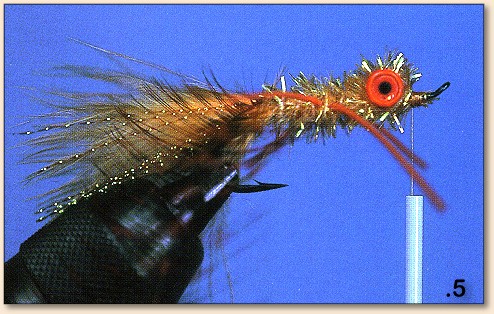
Step 5. Wrap chenille forward, keep wraps tight, tie off, trim.
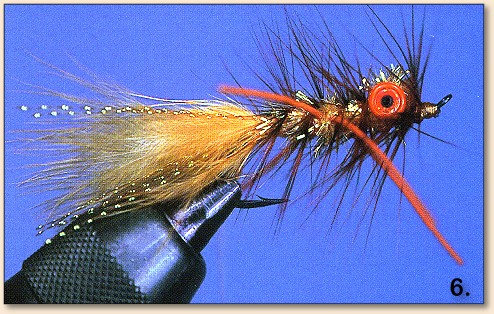
Step 6. Wrap hackle forward, work hackle into yarn, wrap tight
to hook. Tie off, trim. Wrap rib forward in opposite direction
as hackle (clockwise versus counter–clockwise). (Use a bodkin
or needle to guide rib through hackle.) Tie off, trim, whip
finish, cement head. Trim rubber legs to about hook–shank length.
~ Deke Meyer
Credit:
The Steelhead Rubber Legs is an excerpt from Tying Steelhead Flies
published by Frank Amato Publications.
For more great flies, check out:
Beginning Fly Tying,
Intermediate Fly Tying and Advanced
Fly Tying.
|

